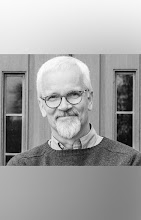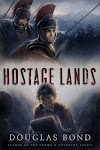
INK BLOTS 12/20/09 (setting: DM’s sitting room, overstuffed chairs, fire crackling in the wood stove, 6 men, libation: Twisted Zin)
1. READER/WRITER: DM opened with on overview of his intriguing novel manuscript told from the point of view of an old man who finds his plane with engine troubles and a forced landing for repairs in a south pacific island-- one he had fought on in WWII. He is a missionary retiring and … A local missionary takes the old man in while the plane is being repaired. Over dinner the missionary draws out the story of the old man’s time in WWII on this island. Flashback to WWII.
DM put in at chapter 5 (10 minute reading rule), a flashback to when the old man was a young recruit, the ramp up to American involvement in WWII gaining steam. Marine recruits: The train in SD pulled into a station… Bakersfield CA. Ted grimaced… said, watching the sun reflect on the rounded corner, … shimmering in the central valley heat on the freeway…. Blah, blah… Cynical tone. Is this what you want, need? If so, for what purpose? Authenticity? Is this the way Marine recruits interacted? Maybe so. Avoid the gratuitous. Good use of actually historical material, quotes from what? Autobiographies, letters... Good reference to having to talk about God, but worth it to get war stories out of him (WWI, presumably). Your telling of getting off the bus, first encounter with drill instructor, learning to say “Sir,” Ted flat on his back—vivid story telling here.
COMMENT AND CRITIQUE: DB opens the comment and critique stage with a discussion of point of view. When do you choose to write in first person, third person, omniscient, second person? In this case, I urged DM to shift to first person, the old man’s intimate point of view as he tells the story of his fighting on this very island. Left in third person, DM loses the verisimilitude of the layers created by shifting into the old man’s head, his intimate recollections, his tortured memories, his unresolved moral dilemmas, the sudden awakenings in the night, his racing pulse, … in my opinion this is critical. Shift to the old man’s inner view, the perspective that readers will believe the most and you gain vast authenticity, integrity, and…
2. READER/WRITER: DK began rereading his futuristic tale of two brothers who grow up as to two rough and tumble young men striving with each other. One becomes president, a liberal, a socialist, Marxist, statist dictator, his brother opposes him. This is a sort of 1984-esque political satire, or is it an expose on contemporary liberal political theory and implementation. He shows the impersonalizing influence of resurgent Marxism in the United Socialist States.
Last time we critiqued his narrative as too dry, too something. I suggested that his narrative needed a point of view, a narrator who was a character, a point of view that legitimately could be telling the story, an authentic lens with a dog in the fight, someone to whom all this mattered deeply, and hence so to the reader.
There’s more fluidity to this draft this go around. But the shooting in North Carolina seems too abrupt. DM suggests shifting the narrative about the shooting to a newspaper article or seeing a news spot on the shooting while at a bar or whatever. I agree. The deal is, in my opinion, that the original narrative was disconnected from the effect that it needed to have on the protagonist.
I dominate the discussion (again) by trying to establish the writing, story telling principle in view here: Whatever happens in the story has to effect, impact, your protagonist, which is the important thing. If something, anything, happens in the story that does not impact the protagonist, it most likely does not need to be in this story. Save it for a tale where it does matter to the protagonist. That’s the principle, as I see it.
Again, some point of view problems, potentially. Is Alexis our main character, the one the reader will most identify with, the one that matters? There were name problems before, solved at least in part by having the brothers have different last names because of death of father and remarriage, making them half brothers. Avoid names that begin with the same letter (though I do it in Guns of Providence, but for reasons of authenticity)
RD asked why DK is writing the book. Good question. Idea came from present political currents. To DK, fiction was the best way to communicate the message he wanted to get across. Another civil war? It happened before. Could it happen again? The novel explores this. A what-if scenario. A way to “sprinkle in some history” and explore what we are about as a nation, what our constitution is really all about. Purpose for writing is critical. Just to entertain? To instruct?
DM referenced Provost’s Beyond Style. What percentage of the actual word count is message, what percentage is story, action, character development? Best writing the message will flow inevitably, necessarily, from the character and the conflict that must be resolved for that character.
DB referenced O’Conner create a complex character with real issues that generate real conflict in a real world, and that desperately need resolving. She then plunks the character down (plunk may not be the most accurate word here) in a real life situation that will force the character to act, that acting exposes the flaws in the character’s world view, is bludgeoned with inevitable violence and confronted with a moment of grace. Mystery and Manners is the O’Conner book I was referring to. Helpful writing perspective to be gained from it.
I then referenced CS Lewis and the three motives for writing: Write what the reader wants to read; write what you as an author think the reader needs; write what you, the author, need. Lewis argues that the last is the motive that compels him forward as a writer. In a naturalist world, seeing into the metaphysical world is what Lewis, is what all of us need. But it comes much more authentically to the reader when Lewis is exploring what he needs. And he doesn’t mix his genre and begin preaching. You choose a genre because it is the best genre to communicate what you need. Hence, children’s literature to communicate something children are strong at, seeing the unseen, imagining another world, playing.
Read Milton and classic poetry. Why? Adler and How to Read a Book. Poetry is the push-ups of prose. It gives you structural skill (cadence, rhythm, vast scrutiny of words), and vantage point and scope of feeling and …
GENERAL DISCUSSION AND PRODINGS TO WRITE: NSJ thinking about writing about his growing up years as missionary kid in Africa; a page written! AS not writing right now but thinking about writing children’s fiction and hymn poetry. RDM has written an Arthurian children’s retelling that is allegory for Christian young men to be noble knights (I’ve read and critiqued this privately). I close with reading a hymn based on Ephesians 2:11-22, strategically leaving little or no time for critique!


















































